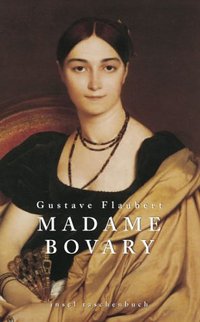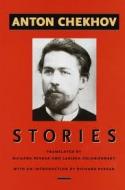Author Photo And Bio
 1. Hamlet by William Shakespeare (1600). The most famous play ever written, Hamlet tells the story of a melancholic prince charged with avenging the murder of his father at the hands of his uncle, who then married his mother and, becoming King of Denmark, robbed Hamlet of the throne. Told the circumstances of this murder and usurpation by his father’s ghost, Hamlet is plunged deep into brilliant and profound reflection on the problems of existence, which meditations delay his revenge at the cost of innocent lives. When he finally acts decisively, Hamlet takes with him every remaining major character in a crescendo of violence unmatched in Shakespearean theater.
1. Hamlet by William Shakespeare (1600). The most famous play ever written, Hamlet tells the story of a melancholic prince charged with avenging the murder of his father at the hands of his uncle, who then married his mother and, becoming King of Denmark, robbed Hamlet of the throne. Told the circumstances of this murder and usurpation by his father’s ghost, Hamlet is plunged deep into brilliant and profound reflection on the problems of existence, which meditations delay his revenge at the cost of innocent lives. When he finally acts decisively, Hamlet takes with him every remaining major character in a crescendo of violence unmatched in Shakespearean theater.
 2. Madame Bovary by Gustave Flaubert (1857). Of the many nineteenth-century novels about adulteresses, only Madame Bovary features a heroine frankly detested by her author. Flaubert battled for five years to complete his meticulous portrait of extramarital romance in the French provinces, and he complained endlessly in letters about his love-starved main character — so inferior, he felt, to himself. In the end, however, he came to peace with her, famously saying, “Madame Bovary: c’est moi.” A model of gorgeous style and perfect characterization, the novel is a testament to how yearning for a higher life both elevates and destroys us.
2. Madame Bovary by Gustave Flaubert (1857). Of the many nineteenth-century novels about adulteresses, only Madame Bovary features a heroine frankly detested by her author. Flaubert battled for five years to complete his meticulous portrait of extramarital romance in the French provinces, and he complained endlessly in letters about his love-starved main character — so inferior, he felt, to himself. In the end, however, he came to peace with her, famously saying, “Madame Bovary: c’est moi.” A model of gorgeous style and perfect characterization, the novel is a testament to how yearning for a higher life both elevates and destroys us.
 3. Lolita by Vladimir Nabokov (1955). “Lolita, light of my life, fire of my loins. My sin, my soul.” So begins the Russian master’s infamous novel about Humbert Humbert, a middle-aged man who falls madly, obsessively in love with a twelve-year-old “nymphet,” Dolores Haze. So he marries the girl’s mother. When she dies he becomes Lolita’s father. As Humbert describes their car trip —a twisted mockery of the American road novel —Nabokov depicts love, power, and obsession in audacious, shockingly funny language.
3. Lolita by Vladimir Nabokov (1955). “Lolita, light of my life, fire of my loins. My sin, my soul.” So begins the Russian master’s infamous novel about Humbert Humbert, a middle-aged man who falls madly, obsessively in love with a twelve-year-old “nymphet,” Dolores Haze. So he marries the girl’s mother. When she dies he becomes Lolita’s father. As Humbert describes their car trip —a twisted mockery of the American road novel —Nabokov depicts love, power, and obsession in audacious, shockingly funny language.
 4. The Makioka Sisters by Junichiro Tanizaki (1943–48). Serialized during wartime, this epic novel chronicles the decline of the Osaka family and the transformation of traditional Japanese society. As their fortunes wither, elder sisters Tsuruko and Sachiko try to preserve the family name and marry off the talented, sensitive Yukiko. All the while the youngest sister, Taeko, aches for freedom from her sisters’ conservatism. Tanizaki uses detailed descriptions of Japanese traditions, such as the tea ceremony, to underscore their fleetingness in an era of rapid modernization.
4. The Makioka Sisters by Junichiro Tanizaki (1943–48). Serialized during wartime, this epic novel chronicles the decline of the Osaka family and the transformation of traditional Japanese society. As their fortunes wither, elder sisters Tsuruko and Sachiko try to preserve the family name and marry off the talented, sensitive Yukiko. All the while the youngest sister, Taeko, aches for freedom from her sisters’ conservatism. Tanizaki uses detailed descriptions of Japanese traditions, such as the tea ceremony, to underscore their fleetingness in an era of rapid modernization.
5. Resurrection by Leo Tolstoy (1899). As a juror on a Moscow murder trial, the middle-aged dandy Prince Nekhlyudov recognizes the defendant as a girl from his family’s country estate whom he had once seduced and abandoned. Blaming himself for her fate, he follows her into exile in Siberia to atone for his actions and the loss of his youthful idealism. Part social exposé, part religious tract expounding Tolstoy’s unorthodox Christianity, the book lambastes Russia’s social divisions and inept justice system.
 6. Stories of Anton Chekhov (1860–1904). The son of a freed Russian serf, Anton Chekhov became a doctor who, between the patients he often treated without charge, invented the modern short story. The form had been overdecorated with trick endings and swags of atmosphere. Chekhov freed it to reflect the earnest urgencies of ordinary lives in crises through prose that blended a deeply compassionate imagination with precise description. “He remains a great teacher-healer-sage,” Allan Gurganus observed of Chekhov’s stories, which “continue to haunt, inspire, and baffle.”
6. Stories of Anton Chekhov (1860–1904). The son of a freed Russian serf, Anton Chekhov became a doctor who, between the patients he often treated without charge, invented the modern short story. The form had been overdecorated with trick endings and swags of atmosphere. Chekhov freed it to reflect the earnest urgencies of ordinary lives in crises through prose that blended a deeply compassionate imagination with precise description. “He remains a great teacher-healer-sage,” Allan Gurganus observed of Chekhov’s stories, which “continue to haunt, inspire, and baffle.”
 7. Persuasion by Jane Austen (1817). Eight years ago, Anne Elliot was persuaded by a friend to break off her engagement to a handsome naval officer because he lacked wealth and name. Now twenty-seven, her romantic prospects a dim memory, she encounters him once again, only now he is a grand success. Can she rekindle his love?
7. Persuasion by Jane Austen (1817). Eight years ago, Anne Elliot was persuaded by a friend to break off her engagement to a handsome naval officer because he lacked wealth and name. Now twenty-seven, her romantic prospects a dim memory, she encounters him once again, only now he is a grand success. Can she rekindle his love?
 8. The Portrait of a Lady by Henry James (1881). James’s Portrait is of that superior creature Isabel Archer, an assured American girl who is determined to forge her destiny in the drawing rooms of Europe. To this end, she weds the older and more cultivated Gilbert Osmond, and eventually finds that she is less the author of her fate than she thought. Throughout, James gives us a combination of careful psychological refraction and truly diabolical plotting. The result is a book at once chilling and glorious.
8. The Portrait of a Lady by Henry James (1881). James’s Portrait is of that superior creature Isabel Archer, an assured American girl who is determined to forge her destiny in the drawing rooms of Europe. To this end, she weds the older and more cultivated Gilbert Osmond, and eventually finds that she is less the author of her fate than she thought. Throughout, James gives us a combination of careful psychological refraction and truly diabolical plotting. The result is a book at once chilling and glorious.
 9. Disgrace by J. M. Coetzee (1999). Fifty-two years old and twice divorced, Professor David Lurie thought the affair with his student might bring passion back to his life. Instead, it costs him his job and his friends when he refuses to repent his sin. He retreats to his daughter’s farm, hoping to build on their relationship and write about Byron. But his tranquil oasis is shattered by racial violence in this uncompromising novel by the South African Nobel laureate.
9. Disgrace by J. M. Coetzee (1999). Fifty-two years old and twice divorced, Professor David Lurie thought the affair with his student might bring passion back to his life. Instead, it costs him his job and his friends when he refuses to repent his sin. He retreats to his daughter’s farm, hoping to build on their relationship and write about Byron. But his tranquil oasis is shattered by racial violence in this uncompromising novel by the South African Nobel laureate.
 10. Waiting for Godot by Samuel Beckett (1953). Two vagabonds, Vladimir and Estragon, “blathering about nothing in particular,” provoke, challenge, and defend each other while they wait for the appearance of the mysterious Godot. Twice the tramps ponder hanging themselves from the branches of a nearby willow tree; twice they try to make sense of a stranger named Pozzo and his leashed servant Lucky. All the characters abide in a world peculiar for its absences: of meaning, rationality, consolation, and of course the slyly named Godot.
10. Waiting for Godot by Samuel Beckett (1953). Two vagabonds, Vladimir and Estragon, “blathering about nothing in particular,” provoke, challenge, and defend each other while they wait for the appearance of the mysterious Godot. Twice the tramps ponder hanging themselves from the branches of a nearby willow tree; twice they try to make sense of a stranger named Pozzo and his leashed servant Lucky. All the characters abide in a world peculiar for its absences: of meaning, rationality, consolation, and of course the slyly named Godot.